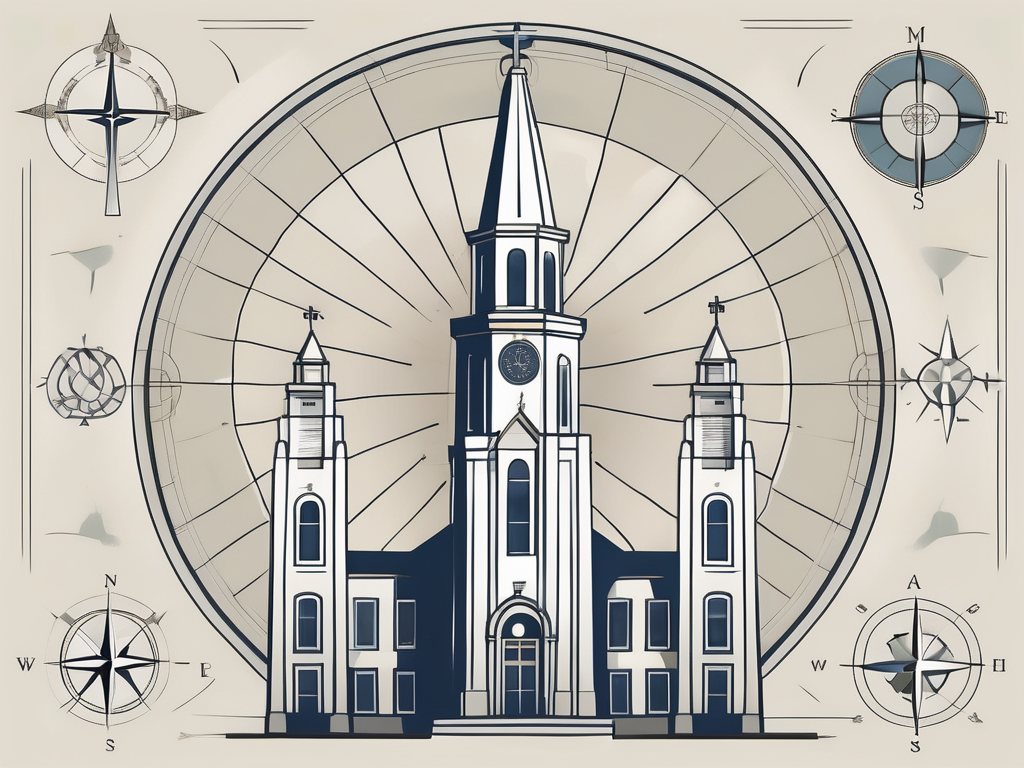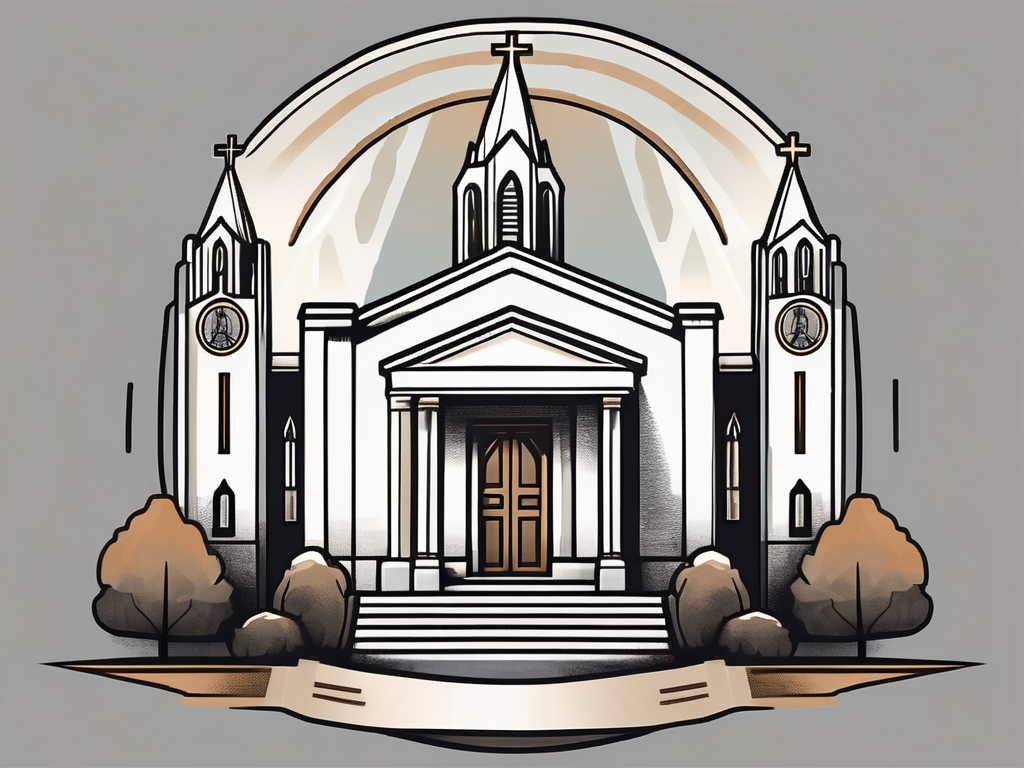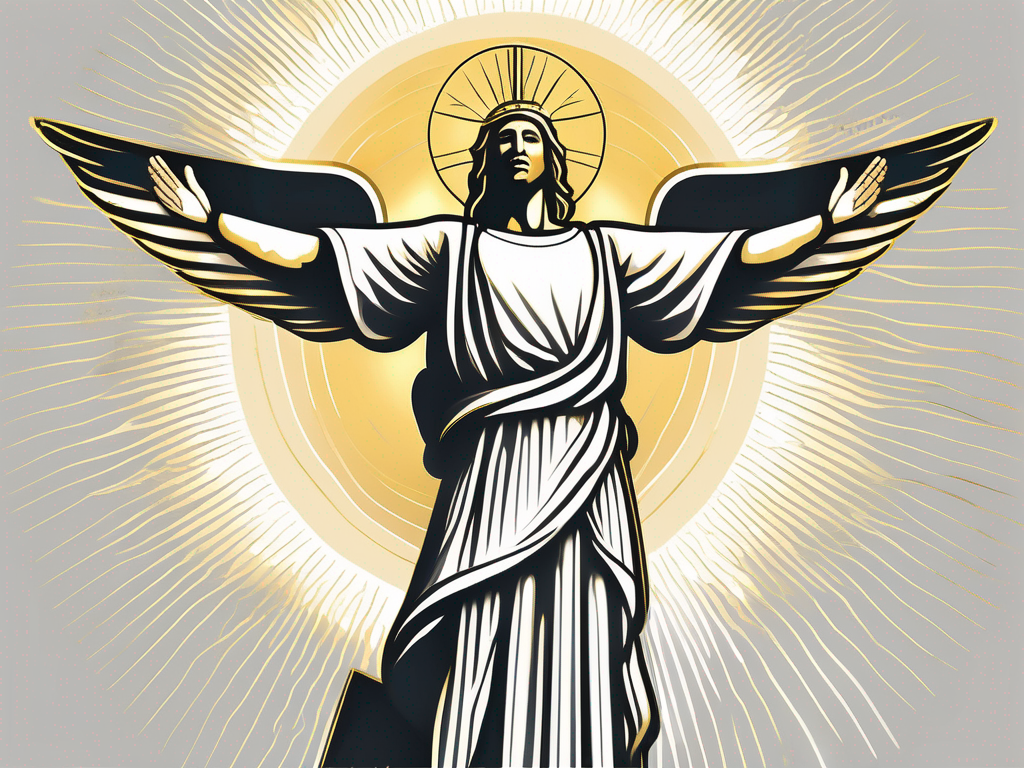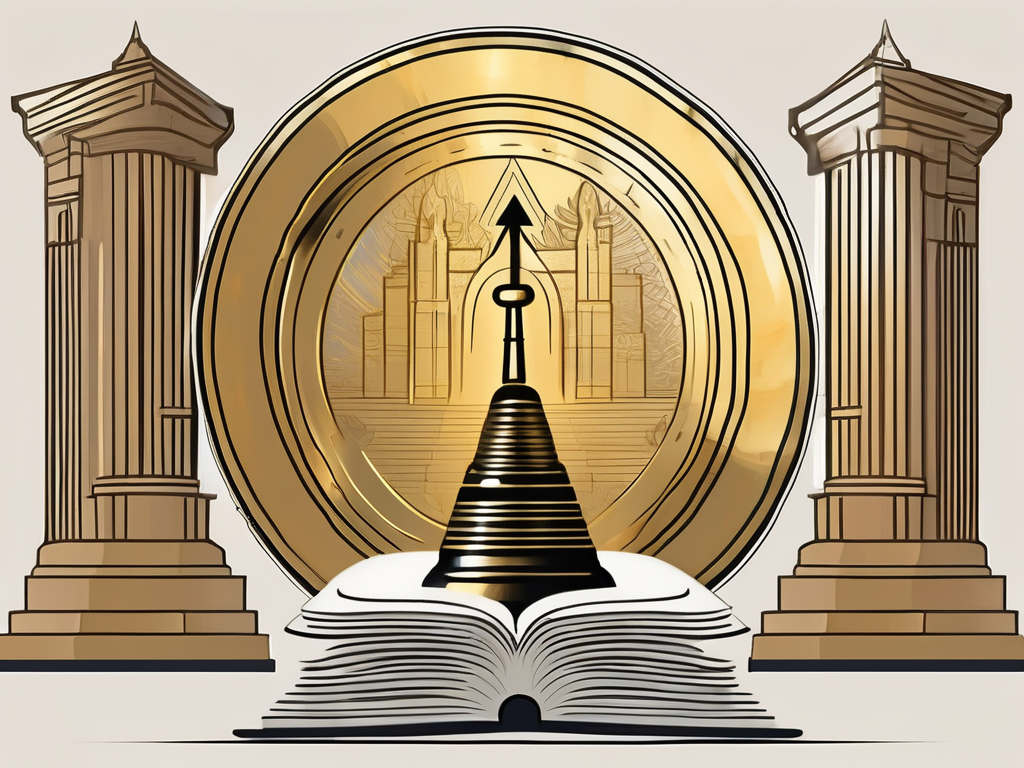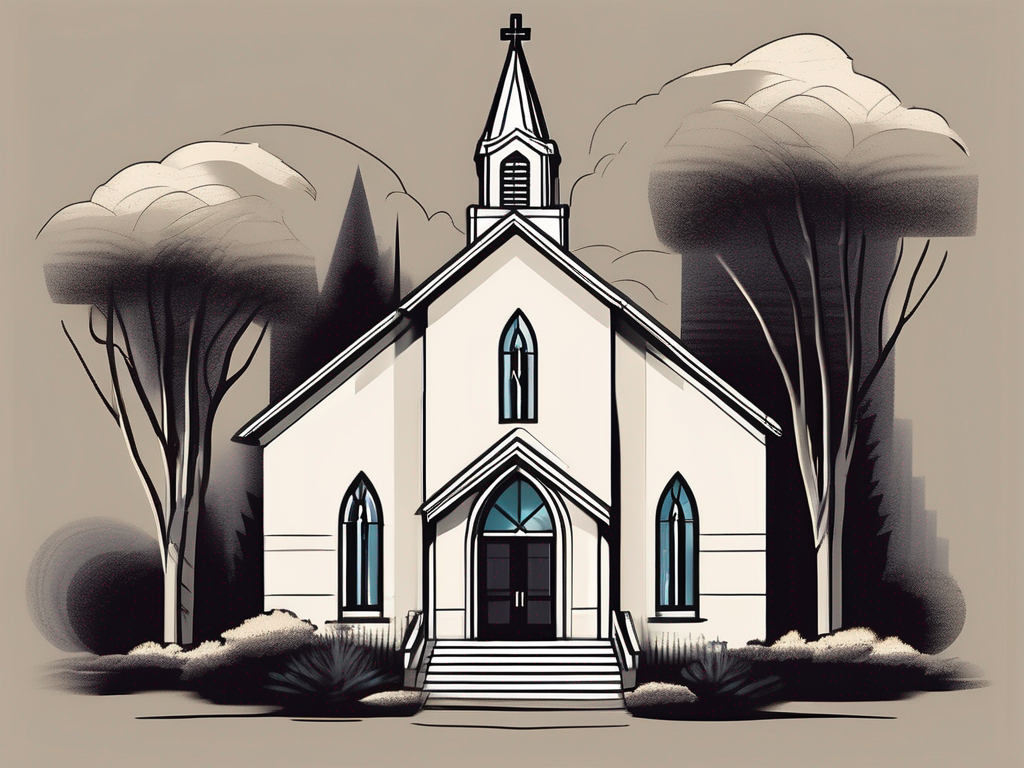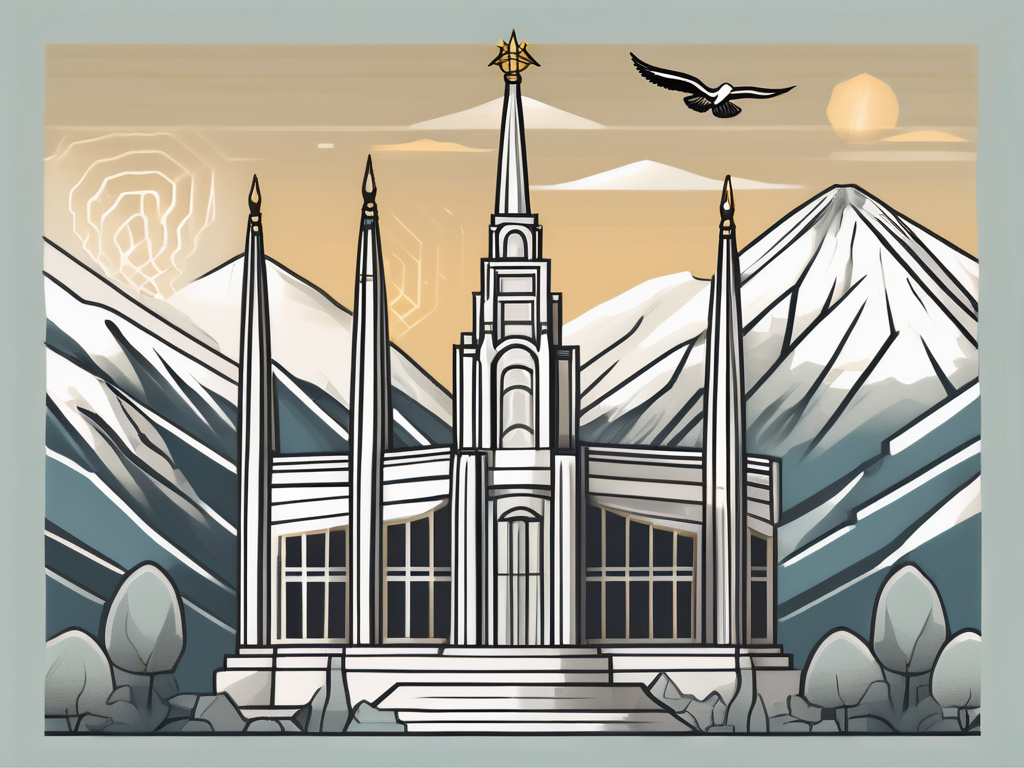In the vast landscape of religious institutions, the Mormon Church stands out for its unique structure and leadership system. Understanding the role of Mormon Church leadership is key to comprehending the inner workings of this faith. In this article, we will take an in-depth look at the structure, theological foundations, roles and responsibilities, and the impact of Mormon Church leadership on its members.
Understanding the Structure of the Mormon Church
The Mormon Church, officially known as The Church of Jesus Christ of Latter-day Saints, is guided by a hierarchical leadership system that is divided into various levels of authority. This structure ensures that the decisions made and doctrines established are unified and in line with the teachings of the church.
The hierarchical system of the Mormon Church is designed to provide a clear chain of command and maintain order within the organization. At the top of the hierarchy is the President of the Church, who is considered to be a prophet, seer, and revelator. This individual is regarded as God’s chosen representative on Earth and is responsible for leading the entire Mormon Church. The President is not only the spiritual leader of the church but also the administrative head, overseeing all aspects of its operations.
Beneath the President, we find the Quorum of the Twelve Apostles. They are viewed as special witnesses of Jesus Christ and serve as the President’s counselors. Together with the President of the Church, they hold the highest authority. The Quorum of the Twelve Apostles is responsible for preaching the gospel, administering ordinances, and guiding the church worldwide. Each member of the Quorum is considered equal in authority and importance.
Key positions in the Mormon Church leadership extend beyond the President and the Quorum of the Twelve Apostles. These roles include the First Presidency, the Seventy, the presiding bishops, and the general auxiliary leaders. The First Presidency consists of the President of the Church and his two counselors. They work closely with the Quorum of the Twelve Apostles in making important decisions and providing guidance to the church.
The Seventy are a group of leaders who assist the Quorum of the Twelve Apostles in their responsibilities. They are organized into quorums and serve in various capacities, including overseeing specific geographic areas or administrative functions. The Seventy play a vital role in the day-to-day operations of the church and help ensure that the teachings and principles of the gospel are spread throughout the world.
Presiding bishops are responsible for the temporal affairs of the church. They oversee matters related to finances, welfare, and the physical properties of the church. Their role is crucial in ensuring that the resources of the church are managed wisely and used to benefit its members and the community at large.
General auxiliary leaders are women who hold leadership positions in organizations that provide support and guidance to specific groups within the church. These organizations include the Relief Society, Young Women, and Primary. General auxiliary leaders work closely with the general authorities of the church to meet the unique needs of women and children and promote their spiritual growth and well-being.
Understanding the structure of the Mormon Church is essential for members and non-members alike. It provides insight into the organization’s leadership, decision-making processes, and the roles and responsibilities of its various leaders. This hierarchical system ensures unity and consistency in the teachings and practices of the church, allowing its members to have a clear understanding of their faith and the direction of the organization.
Theological Foundations of Mormon Leadership
The doctrine of apostolic succession is a fundamental belief within the Mormon faith. This doctrine holds that the authority to lead the church is passed down from one prophet to the next, in an unbroken chain dating back to the time of Jesus Christ and his apostles.
This concept of apostolic succession is deeply rooted in the belief that Jesus Christ established his church during his mortal ministry and appointed apostles to lead and guide it. Mormons view the apostles as special witnesses of Christ, chosen to bear testimony of his divinity and teachings. They believe that this authority and responsibility have been passed down through the generations, ensuring the continuity of divine guidance and leadership within the Church.
The Doctrine of Apostolic Succession
According to this doctrine, when a President of the Church passes away, the most senior member of the Quorum of the Twelve Apostles becomes the new President. This succession ensures a continuation of the divine authority passed down from Jesus Christ through his apostles.
This process of succession is not simply a matter of seniority, but rather a result of divine inspiration and revelation. Mormons believe that the Lord directs the selection of the new President, guiding the Church in choosing the individual who is best suited to lead and receive revelation for the Church in the present day.
The Concept of Prophetic Leadership
Another core element of Mormon leadership is the concept of prophetic leadership. Mormons believe that their leaders receive direct revelation from God, enabling them to provide guidance, insight, and interpretation of scriptures. The President of the Church is believed to have the highest level of spiritual connection to God.
This belief in ongoing revelation is based on the idea that God is actively involved in the affairs of his children and continues to communicate with them through chosen prophets. Mormons view their leaders as modern-day prophets, seers, and revelators, who have the authority to receive divine guidance and communicate it to the Church.
Through this prophetic leadership, Mormons believe that God provides specific instructions and guidance to address the unique challenges and needs of the Church and its members. This guidance can range from doctrinal clarification to practical advice on personal and family matters.
Furthermore, Mormons believe that the President of the Church is sustained as a prophet, seer, and revelator by the membership of the Church. This sustaining vote is seen as an expression of faith and commitment to follow the guidance and teachings of the prophet, as well as a recognition of his divine calling and authority.
In summary, the theological foundations of Mormon leadership are built upon the doctrines of apostolic succession and prophetic leadership. These beliefs emphasize the continuity of divine authority and the ongoing revelation from God to guide and direct the Church. Through these principles, Mormons find comfort and guidance in knowing that their leaders are called and inspired by God to lead them in their spiritual journey.
Roles and Responsibilities of Mormon Church Leaders
Within the Mormon Church, different leadership positions entail specific roles and responsibilities. Understanding these roles provides insight into how the Mormon faith operates and how decisions are made.
The Role of the President of the Church
As previously mentioned, the President of the Church is considered a prophet, seer, and revelator. Their primary responsibility is to receive direction and inspiration from God to guide the church. They provide spiritual counsel and guidance to the members, ensuring the church remains true to its teachings and principles.
However, being the President of the Church is not just a title; it is a sacred calling that requires immense dedication and sacrifice. The President of the Church spends countless hours studying scriptures, praying, and seeking divine guidance to fulfill their responsibilities. They also have the responsibility of being the ultimate decision-maker for the church, making choices that will impact the lives of millions of members around the world.
In addition to their spiritual duties, the President of the Church also serves as the face of the Mormon faith. They represent the church in various public events, meetings, and conferences, spreading the message of love, peace, and faith. Their role as a global ambassador for the church requires them to interact with leaders from different countries and religions, fostering understanding and cooperation.
Duties of the Quorum of the Twelve Apostles
The Quorum of the Twelve Apostles functions as a council to the President of the Church. They assist in the leadership of the church, oversee various aspects of its administration, and provide guidance to the members. Their role is vital in maintaining unity and coherence within the Mormon faith.
Each member of the Quorum of the Twelve Apostles is considered a special witness of Jesus Christ. They are responsible for testifying of His divinity and teachings, both within the church and to the world. Their testimonies serve as a source of strength and inspiration for millions of Mormons worldwide.
Furthermore, the Quorum of the Twelve Apostles plays a crucial role in the process of selecting the next President of the Church. When the current President passes away, the Quorum of the Twelve Apostles convenes to prayerfully consider who should succeed him. This process ensures a smooth transition of leadership and continuity within the church.
Additionally, the members of the Quorum of the Twelve Apostles are actively involved in the church’s missionary efforts. They travel around the world, visiting different countries and meeting with members and non-members alike. Through their visits, they provide guidance, support, and encouragement to local leaders and members, strengthening the faith of individuals and communities.
Overall, the Quorum of the Twelve Apostles is a vital component of the Mormon Church’s leadership structure. Their dedication, wisdom, and spiritual insights contribute to the growth and development of the church, ensuring that it remains a beacon of light and hope for its members.
The Process of Becoming a Mormon Church Leader
Becoming a Mormon Church leader is a rigorous and thoughtful process that involves careful selection and divine inspiration. This ensures that individuals chosen for leadership positions are well-suited to serve and guide the church.
But what does it really take to become a Mormon Church leader? Let’s delve deeper into the path to leadership in the Mormon Church and explore the role of divine revelation in the selection process.
The Path to Leadership in the Mormon Church
Mormon Church leaders are not chosen at random. They are typically individuals who have devoted their lives to the faith, embodying the principles and teachings of the church. These individuals have demonstrated a strong commitment to the gospel and are actively involved in church affairs, gaining experience and knowledge over time.
Leadership positions in the Mormon Church are not just about titles and authority. They require individuals to have a deep understanding of the scriptures, the ability to teach and inspire others, and a genuine love for the members of the church. This path to leadership is not a quick one; it is a lifelong journey of learning, growth, and service.
Aspiring leaders often start by serving in various callings within their local congregations. They may serve as Sunday School teachers, youth leaders, or in other capacities where they can develop their leadership skills and gain practical experience. Through these opportunities, they learn to navigate the complexities of church administration, mentor others, and provide guidance to those in need.
Additionally, aspiring leaders are encouraged to pursue higher education, both secular and religious. Many Mormon Church leaders have advanced degrees in fields such as theology, education, or business, which further equips them to serve the diverse needs of the church and its members.
The Role of Divine Revelation in Leadership Selection
One of the unique aspects of the Mormon Church is its belief in ongoing revelation. Mormons believe that the process of selecting leaders is guided by divine inspiration. The President of the Church, who is considered a prophet, seer, and revelator, along with other leaders, seek inspiration from God to identify individuals who are worthy, endowed with required qualities, and have the necessary skills to fulfill their respective roles.
This process of divine revelation is not taken lightly. It involves prayer, fasting, and seeking spiritual confirmation. Leaders in the Mormon Church rely on their personal relationship with God and their ability to discern His will. They believe that God knows the hearts and minds of all individuals and can guide the selection process to ensure that the right people are called to lead.
Divine revelation in leadership selection is not limited to the President of the Church alone. It extends to all levels of leadership within the Mormon Church. Local leaders, known as bishops and stake presidents, also seek divine guidance when selecting individuals to serve in various leadership positions within their congregations.
It is important to note that the process of becoming a Mormon Church leader is not a guarantee of perfection. Leaders are human beings who make mistakes and face challenges just like anyone else. However, they are expected to strive for personal righteousness, humility, and a deep commitment to serving others.
In conclusion, the process of becoming a Mormon Church leader is a multifaceted journey that requires dedication, service, and divine guidance. It is a path that is not taken lightly, but one that is filled with opportunities for growth, learning, and spiritual development.
The Impact of Mormon Church Leadership on Members
Mormon Church leaders play a significant role in the lives of members, providing spiritual guidance, pastoral care, and fostering a sense of community and belonging.
Spiritual Guidance and Pastoral Care
Mormon Church leaders offer spiritual guidance to members, helping them navigate life’s challenges and decisions. They provide counsel on moral and ethical issues, giving members a framework to make informed choices and live their lives in accordance with their faith.
The Role of Leadership in Community Building
Mormon Church leadership also plays a crucial role in community building. They facilitate opportunities for fellowship, organize service projects, and encourage members to support one another. Through these efforts, leaders foster a sense of unity and create a supportive environment for all members.
Conclusion
The role of Mormon Church leadership is multi-faceted and significant. From the hierarchical structure to the theological foundations, the responsibilities of leaders, and their impact on the members, understanding Mormon Church leadership helps to shed light on the inner workings of this faith. By delving into these aspects, we gain a comprehensive overview of the vital role leadership plays within the Mormon Church.
